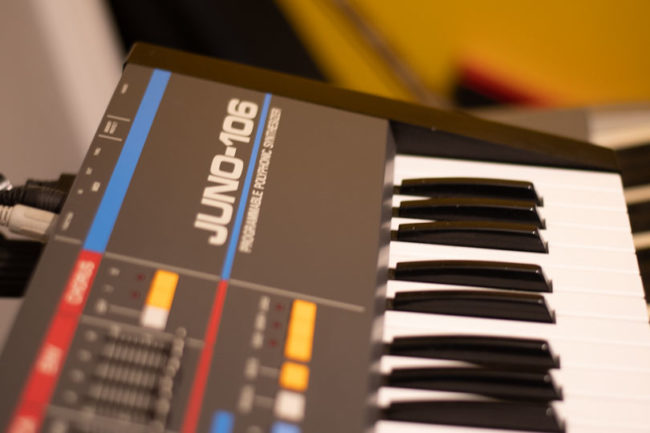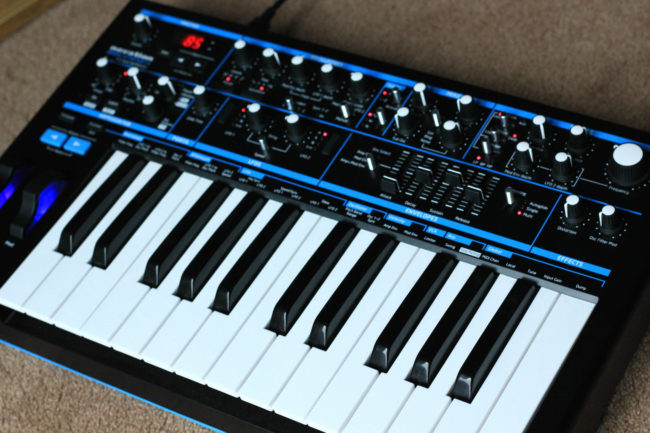For the past 20 years software synths have taken over both the music and SFX world. Clicking through presets, near infinite routing options and instant recall are just some of many benefits the plug in “softsynths” have over hardware versions.
Other than their unique character and quirks, one area that hardware synths excel for my workflow is their tactile control. Being able to just tweak a fader with one hand while moving a mod wheel is something that is definitely possible with softsynths with a bit of prep work and some midi mapping, hardware synths are so much quicker for the way I work.

One of my favourite synths to use is a Roland Juno 106 that I have had for about 7 years. To this day I am still learning little intricoes in both how it works and how it sounds. The limitations that it forces you to work with (just a single envelope and LFO) are great for making me think out side the box when building patches. One of my favourite features on Juno’s is their unique built in Chorus module, featuring just 3 buttons – OFF, I and II. The way this chorus thickens a sound to me is incredibly musical and does so without altering the actual character of the sound too much.

Another synth I have used ALOT is a Novation BassStation 2. These little monsters are incredible for creating sound effects. I’ve made countless bass dives and whooshes using the beast of a filter, and its with this tactile control that can help sounds move in a really natural way. Don’t get me wrong, you can replicate this through either midi or drawing in detailed automation curves, but the ability to have such a massive amount of control within reach is something that I can’t see disappearing from my workflow anytime soon.
One of my favourite things to do when recording the output of these synths back into my DAW project is to add some processing on the way to my interface. Again, there is
nothing stopping you from outputting a softsynth to your interfaces output, plugging up some effects and routing it back to record the results it feels even simpler and more logical to just plug straight from a hardware synth directly into a distortion or tremolo pedal and “printing” this to the recording. It makes you really committed to the results, a level of commitment that when working with softsynths is hard to bring yourself to do.
Triggering midi patches from my DAW to play on the synths is something I do alot too. I’ll load up a soft synth, make a part – whether it is a tiny “melody” for a UI sound or a long whoosh for a transition or attack and then route this midi to a hardware synth. While this midi patch is looping around I can tweak design the patch that I want, apply some processing and just hit record on an audio track that I have on my Reaper template. This means that I have a “committed” audio file that I can then mangle and process further, while still having the original midi clip that I can either layer with more hardware or plugin synths.
Due to how easy it is to just load a DAW session up, make revisions and render it out again without re-patching a synth and loading the original patch (or just dialling in the sound when I realise I forgot to save the patch!! – this happens far too often) for fast moving projects I tend to use software synths most of the time, though every time I do work “out-of-the-box” I end up losing HOURS just messing around with new patches and effects, which isn’t great for productivity, but definitely one of the most fun ways to practise sound design.
